There is a feedback loop at work here: Do we really want more separation from Canada, statehood, or does all this incessant chatter about it simply desensitize the issue into the realm of indifference and boredom? Or, in today’s consumerist world, are political issues to be treated simply as marketing problem and nationalism and separation and language viewed within the context of increasing consumption? But what of this tension between English and French and their seemingly incompatible mythologies? After all our Canadian cultural ghettos were not there to keep the French penned in, but to mitigate the crushing potential of being uprooted and assimilated. These ghettos were open gates through which they could traverse without impediment back and forth, though few have the courage to pass the threshold entirely; enough bravery could be mustered to continually test the imaginary linguistic, multicultural, spatial and historical boundaries that defines Canada.
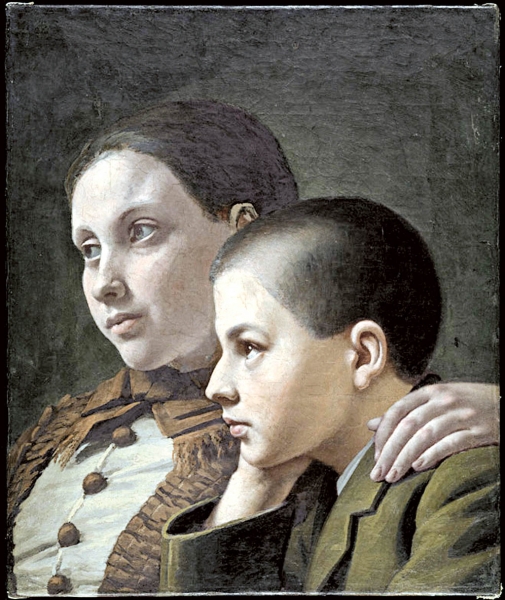
Adine et Henri Bourassa, les enfants de l'artiste (vers 1878), huile sur toile. Restaurée récemment par le Centre de conservation du Québec, cette oeuvre montre notamment le fondateur du Devoir vers l'âge de 10 ans. read more:http://www.offres.ledevoir.com/galeries-photos/expositions-la-redecouverte-d-un-grand-seigneur-de-l-art-quebecois-napoleon-bourassa/76631
Patriot days. Marketing guru Clotaire Rapaille said Quebecers are “completely neurotic” and engage in a sado-masochist relationship with “the English” , a kind of dysfunctional but enduring couple that means they will never separate from Canada. Rapaille, specializes in moving focus groups to escape from reason and into the more primal reptilian mode.He found the emotional and critical side of Quebecers to be in juxtaposition with a sense of repression and an inability to succeed, bound up in an inferiority complex. The anthropological “brands’ psychoanalyst” was fired by the mayor of Quebec allegedly for C.V. falsifications after his “neurotic” comments.
In truth, he imposed to a too great extent his own marketing. Rapaille violated the fundamental principles of personal branding and lost a portion of his credibility, though he did open up a psychic pandoras box in a French linguistic province surrounded by an economically hegemonic and culturally invasive North American society. But, Its worth noting the keen intuitive sense of Quebecers in trashing Rapaille who is after all, a con man and snake oil salesman.
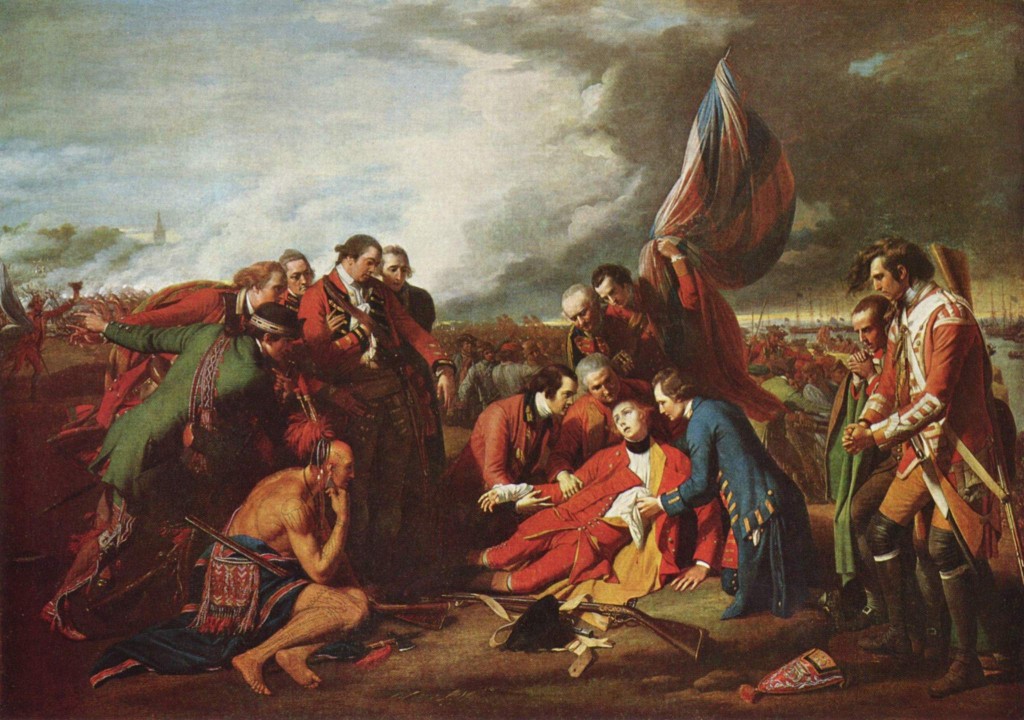
Benjamin West. Death of Wolfe.---While Pepsi was being promoted by Michael Jackson in the rest of the world 25 years ago, the company hired Claude Meunier, a moderately successful member of a Quebec comedy duo, to perform tiny sketch comedy pieces as Pepsi ads. Using broad, often slapstick humor, Mr. Meunier spoofed a variety of stereotypical Quebecers, including a hockey player who seemed to have taken one too many pucks to the head. Mr. Meunier’s characters often spoke slang-laden joual, a dialect that was once mostly heard in working-class, French neighborhoods of Montreal. The ads turned Mr. Meunier into a big celebrity in Quebec and Pepsi became the province’s top soft drink.--- Read More:http://www.xtimeline.com/evt/view.aspx?id=56750
Rapaille asserts that the real root of our behavior is unconscious and fundamentally irrational. Rapaille appropriates his theoretical foundations from Carl Jung’s concept of Archetypes and the Collective Unconscious. But ultimately, his downfall was treating Quebec and its citizens as a brand; Quebecers are prudent and conservative with a honed sense of the real and the authentic and no toleration for shopping their supposed psyche into the market. In fact, they were treated as if they were the follow up product to the project Rapaille flaunts most which was his work on Chrysler’s retro PT Cruiser. Rapaille says he advised Chrysler to design something people would either love or hate. To be “on code” across different cultural markets, he says, Chrysler connected with America’s “I do” ethos via an aggressive Al Capone design, and with the “I think” psyche of France by marketing the Cruiser as infused with “ideas”– like a luggage area that can be converted into a table. (“I discover the code, and–bingo!–the car sells like crazy.”) Quebecers just thought him insulting and a fraud, a self styled priest of group therapy.
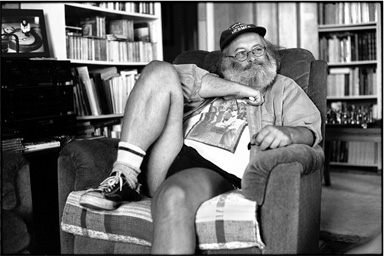
---2008:Pauline Marois is on a damage-control tour. And the damage is self-inflicted. She brought it on by saying she wants Quebecers to be bilingual and have history taught in English in French schools. Reactions were swift. The nastiest came from author Victor Lévy-Beaulieu who called her a "traitor." But his unfounded insults aside, he made one good point: "History has shown that when de-facto bilingualism grows in a minority society, the language of the majority sooner or later becomes the language of most." Since Quebec is a province, the language of the national majority is English. read more:http://www.canada.com/story_print.html?id=3acbd6c6-8131-48ef-81ad-65ffb120abf2&sponsor image:http://www.victor-levybeaulieu.com/viewPage.php?id=2
It can be held that the Canadian and Quebec ghettos and garrisons are, contrary to common perception, not subjected to boundaries but are rather interactive areas of conflict, or, frontiers:
When Montreal poet Irving Layton remembers “the feeling of anxiety I had as a boy whenever I crossed St. Denis Street. This street marked the border between Jewish and French-Canadian territories. East of St. Denis was hostile Indian country densely populated with church-going Mohawks somewhat older than myself waiting to ambush me,” he is describing life at the frontier, his anecdote ironically resonating with images of early fur-trading European explorers to Canada. If there is a psychological wall built in the absence of a real ghetto wall, it actively needs to be maintained from both sides; if there is an invisible line, there must be a response from one group to another. This may be termed negative interaction but is nevertheless demonstrative of mutual exposure. Read More:http://lisa.revues.org/2624
Quebec separatist, and, compelling, fiery writer from Trois-Pistoles, Victor-Levy Beaulieu said he has written 75 works on the inconscious Quebecer and their neuroticisms. He said that some part inside of him, very deep, believes he can be delivered from this form of exorcisim and he could finish by finally seeing the light at the end of the tunnel.However, in 2008 he arrived at the conclusion that these neuroticisms were incurable and ter
l, a deeper malaise that goes beyond periodic bouts of electoral hysteria.
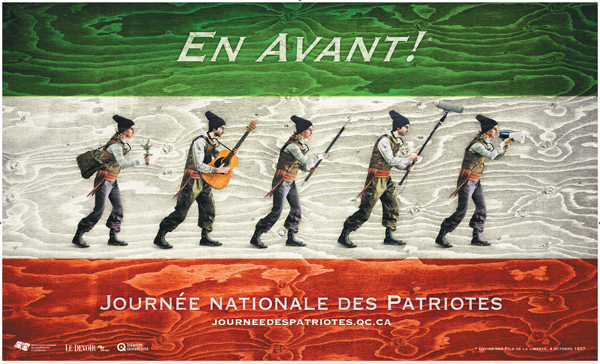
---Clotaire Rapaille:“Now don't get angry when I tell you that you are completely neurotic,” he said in his presentation.“You are like a sadomasochist couple. The sadist needs the masochist and the masochist needs the sadist. … These types of couples last an eternity, they are the best couples, the most stable. You are with the English a sadomasochist couple and you will be that way forever.”Quebeckers' emotional impulses toward the rest of Canada are part of what Mr. Rapaille calls their “primal reptilian core,” which he says constitutes the “code” that lies deep in people's subconscious. Read More:http://www.theglobeandmail.com/news/national/quebec/quebecs-psychic-profile-a-sadomasochist-with-a-reptilian-core/article1497052/ image:http://www.mecanomac.com/blogs/nouvelles
As eccentric as Beaulieu is, his often extravagant creative imaginations have codified images capable of fictionalizing a national culture which has been his own ambition. His fictional characters are forms of self-projection,that live out sexual and other fantasies- almost in a Philip Roth sense, with the same tinge of paranoia and identity crisis- in a nightmare made even less coherent by excessive desires and heavy drinking: His protagonists often struggles touchingly with ignorance and ineptitude and Quebec’s cultural aspirations are often stymied by a sort of sickness and madness and sometimes psychological impotence. Importantly, he has exposed sources of Quebec culture that have been suppressed by the Quebec literary establishment, creating a vivid “Old Weird America”, an “invisible republic” type imagery that Greil Marcus found in Dylan’s Beasement Tapes. Despite and beyond the provocations and shock effects, the subtext of his work is a committed statement about the precariousness of the Quebec psyche and the ambiguous and unsolvable relations between artists and those in power:
In its May 24, 2008 on-line edition of L’Aut’Journal, a Quebec publication that describes itself as “independent, independentist and progressive”, Quebec writer Victor Lévy-Beaulieu describes the Rt. Hon. Michaëlle Jean, who is of Haitian background, as a “little Black queen of Radio-Canada” (Ms. Jean worked as a Radio-Canada journalist prior to being appointed to the vice-regal post) that has become an “accomplished Negro-Queen” with a “reflex of a colonized person.” Referring to her recent visit to France during which she spoke out against slavery, Mr. Lévy-Beaulieu wrote that separatists could have assisted her return to Canadian soil by “imitating French slave traders when they were doing business with the Negro kings of Equatorial Africa.” Read More:http://www.crarr.org/?q=node/70 aa
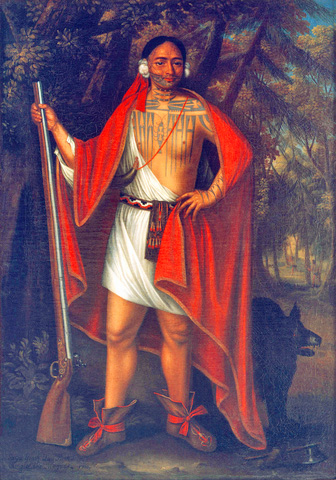
Dutch artist John ▲ Verelst in 1710 depicting Indian Sachems who were self-appointed envoys of the Iroquois Confederacy of tribes from the borderlands between Canada and what is now upper New York state. They were painted in London in 1710 while on a visit designed to cement Iroquois military support for the British in their struggles with the French for imperial supremacy in North America. Read More:http://miller-malcom-familytree.net/rice_family_from_england.htm
In his latest rant in Le Devoir, Beaulieu armed himself with long quoted from Antonin Artaud as an antidote by projection onto Quebec’s neuroses and hysteria as perceived by Beaulieu. It makes a certain sense in an incoherent way. Artaud speaking of a new body, a second body, a body that reforms and reorganizes after the gaping mouth of the scream.An exorcism of our double that we can’t quite close the door on. It is the scream itself that gives birth to this body, a body screamed into existence and organized around this traumatic event as origin.The split within the modern subject is further complicated and explored by Artaud who was in search of the primal scream of the theater. Artaud’s body was already divided as it existed in the space and temporal order of the second scream, yet desired to exist in the space of the first primal scream, before the encounter with the Other. Artaud looked at this as a catharsis, as a mode of exorcism to rid himself of God’s influence and judgment. The primal scream is before judgment, and more importantly, before a conception or awareness of the possibility of judgment. Beaulieu feels Quebec is in this state, a helpless purgatory without end biding our time with the indignity of living by projecting the Quebec collective sense of shame and humiliation on political and national aspirations.
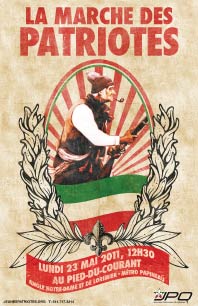
---Canadians, he said, tend to dwell in their “rational” mode, Americans “reptilian” and Quebeckers “emotional.” “You are the dimension that is missing in North America and that is very important,” he said. “You are an historic aberration. You didn't have a chance to survive, yet you did. You are role model for the world.…All small cultures in the world can use you as a model.” Mr. Rapaille said...---Read More:http://www.theglobeandmail.com/news/national/quebec/quebecs-psychic-profile-a-sadomasochist-with-a-reptilian-core/article1497052/ image:http://www.jeunespatriotes.org/
Read More:http://aol.soup.io/tag/Academics
ADDENDUM:
Douglas Atkin:The reason why is pretty obvious if you think about it: The desire to belong to something, to make meaning out of something, is universal. What’s changed nowadays is, as we’ve become a more consumerist society, the institutions that become vessels for making meaning or venues for creating community have in turn become more consumerist, so the kind of functions that cults and religions used to perform years and years ago are increasingly being taken over by brands….I think that the profound desire to make meaning and belong to something is part of the human condition. Consumerism is such a feature of our life that the venues are increasingly consumerist. I don’t think we can make a value judgment about that; it just is happening…
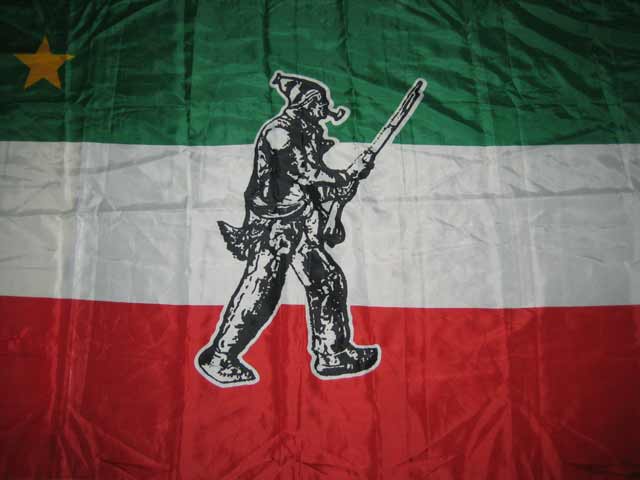
---It seems my maybe-not-so-innocuous comment regarding the Rebellion of 1837-1838 patriots’ flag – a horizontal tricolour with green, white and red bands, a revolutionary flag adopted in the early 1800s by the reformist Patriote movement attempting to end the economic disenfranchisement and political oppression of the francophone majority by the British-supported anglophone minority – touched a chord, in some cases a symphony, with many of you. Reader Alexandre Fontaine responded to my March 3 column, "Anarchists Give MLNQ a RASH," in which I wrote "What is more patently ridiculous? Carrying around a flag that’s 167 years away from meaning anything, or taking the time to kick the crap out of someone for doing it?" after an MLNQ affiliate was beaten for flashing a Patriote flag last month. Writes Fontaine: "When you said that the patriot flag of 1837 is meaningless today, I have to say you really pissed off a lot of people. Me included. Jamie, my friend, if you look at that ‘archaic’ flag, you’ll see that it’s a French flag with green instead of blue, the former being put on instead of blue to represent the amount of Irish people that were living and working with French Canadians in Lower Canada. To me, that flag is really the first flag made of what Canada and Quebec represents nowadays: different cultures working together to make something new and much better than what they had known in the past… Read More:http://hour.ca/2005/03/17/raising-a-red-flag/ image:http://marysoderstrom.blogspot.com/2010/05/good-name-for-may-holiday-la-journee.html
———————————————————————-
Northrop Frye….the “garrison mentality.” Frye describes the Canadian imagination as consisting of “small and isolated communities surrounded with a physical or psychological ‘frontier’ […] such communities are bound to develop what we may provisionally call a garrison mentality.” It involves persistently taking a defensive stance against the world’s larger influences—an image of helpless Canadians huddled together besieged by the vast nothingness of the wilderness on one side and the aggressive capitalism of America on the other comes to mind—as well as being preoccupied with asserting social and moral values. Greenstein proposes that Frye’s Canadian garrison is interchangeable with the ghetto, the only difference being that one spans out over thousands of kilometres, and the other over thousands of years…. Read More:http://lisa.revues.org/2624
Read More:http://www.nytimes.com/2009/07/31/business/media/31adco.html
Read More:http://www.whatquebecwants.com/whatquebecwants/beverages/page/2/





 COMMENTS
COMMENTS